Ko wai a Māpihi? This is not water.

Image courtesy of Nick Denton and Cae Heke.
archived
14 Apr
–
28 May
2022
Cae Te Wheoro Heke, Nick Denton
Pōneke is a city full of streams. At least five run through the district named Te Aro, formerly amongst diverse wetlands and gardens, meeting Te Whanganui-a-Tara at the shoreline of Te Aro Pā.
They are still here. Waimapihi flows down from the gully in Waimapihi Reserve, through a forest of trees reaching up like vines into a shaded canopy. It meets the top of Holloway Road, channelled through a low concrete wall, a steel grate, and a pipe. It follows the road down Aro Street. If you know where to stand you can hear the gushing, tumbling of a waterfall under your feet. It traces ancient pathways now hidden, underneath buildings, crossing streets and the hum of people. Finally, Waimapihi flows past the foundations of Te Aro Pā at the end of Taranaki Street, before its waters rejoin Te Whanganui-a-Tara.
The stream is named for Māpihi (Ngāi Tara, Ngāti Māmoe) a wahine Rangatira who bathed here, although her stories are also hidden from view to most who cross her stream. Fish follow its course up and down dark underground paths, migrating through brick culverts and reinforced concrete apertures. Kōkopu can be seen upstream, and tuna and kōaro are among a thousand other species who touch this awa. Except, Waimapihi, for most of its length, is not a stream. It’s not even water.
In this new immersive exhibition, Ko wai a Māpihi? This is not water, architect and design practitioners Nick Denton and Cae Heke hold space for Waimapihi to be seen and heard again in the city. Formed as a living room, the exhibition recognises the mana of Waimapihi as a living essence, portraying the duality of her whakapapa and colonial history, and challenging the Resource Management Act 1991 definition of ‘water’ that excludes water found in any pipe, tank or cistern.
The exhibition includes work by taonga pūoro artist Ruby Solly (Kai Tahu, Waitaha, Kāti Māmoe), and toi kupu / writing by Hana Buchanan (Ngāti Haumia, Taranaki and Te Atiawa). Interweaving photography, writing, video, sound, vinyl medium and GIS mapping, Ko wai a Māpihi? This is not water asks; what is the catchment of a stream we cannot see? What would Māpihi be supporting today and what is our relationship with her life-giving force? What definitions of the world can we use to make the spaces we wish to live within?
Exhibition essays
REFLECTIONS FROM LEFT BANK
A poetic response by Hana Buchanan
Read online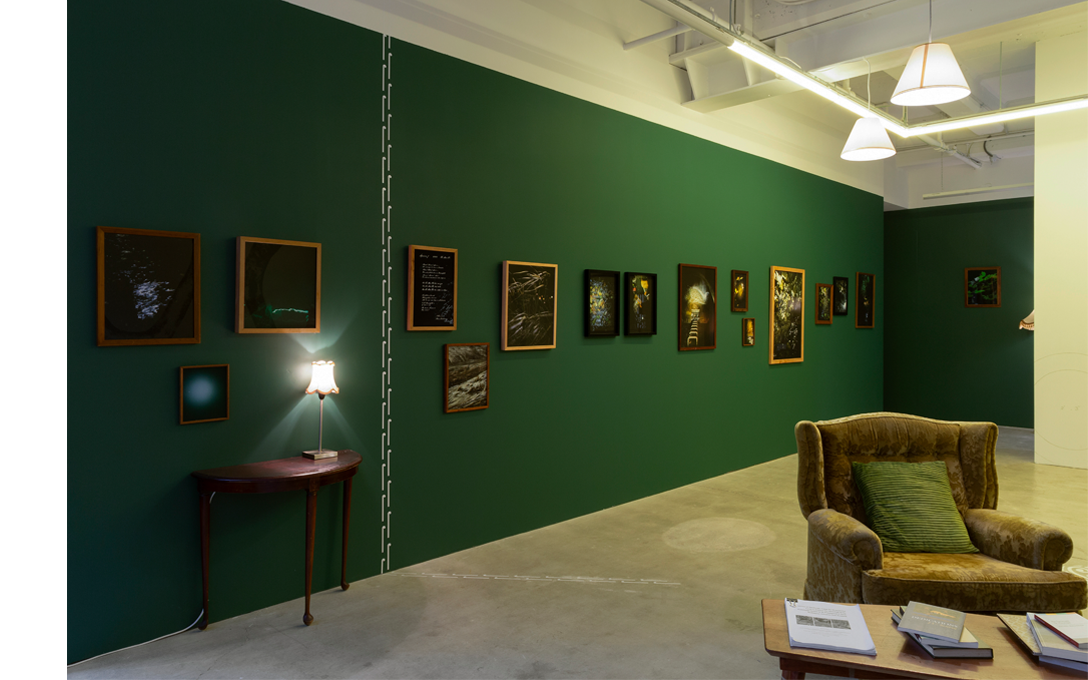
Cae Te Wheoro Heke and Nick Denton, Ko wai a Māpihi? This is not water. 2022 (install image). Portraits of Waimapihi, 2022, digital prints, and A living room for Māpihi, 2022, mixed materials. Image courtesy of Cheska Brown.
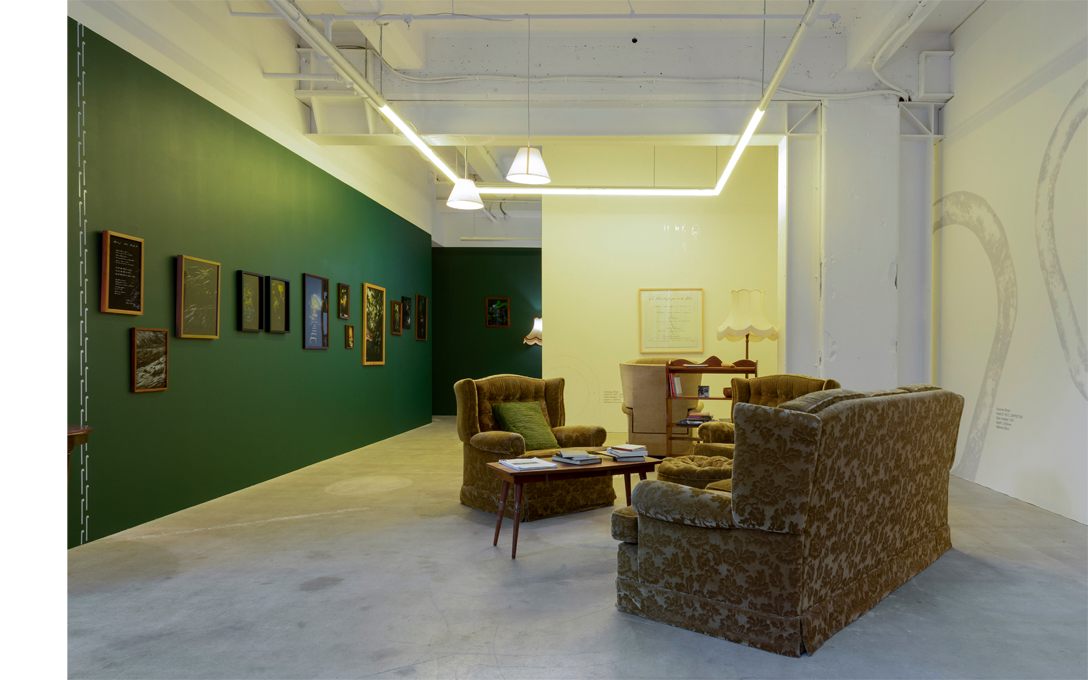
Cae Te Wheoro Heke and Nick Denton, Ko wai a Māpihi? This is not water. 2022 (install image). Portraits of Waimapihi, 2022, digital prints, A living room for Māpihi, 2022, mixed materials and Waimapihi Stormwater Pipe Cross-Sections, 2022, wall painting and vinyl. Image courtesy of Cheska Brown.
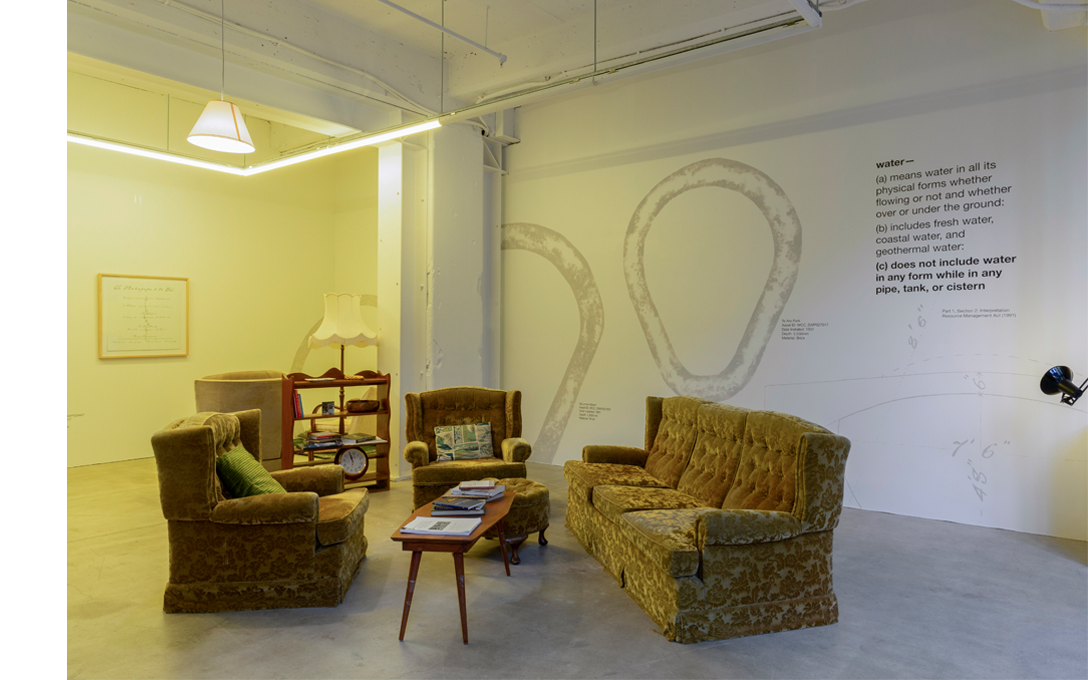
Cae Te Wheoro Heke and Nick Denton, Ko wai a Māpihi? This is not water. 2022 (install image). A living room for Māpihi, 2022, mixed materials and Waimapihi Stormwater Pipe Cross-Sections, 2022, wall painting and vinyl. Image courtesy of Cheska Brown.

Cae Te Wheoro Heke and Nick Denton, A living room for Māpihi, 2022, mixed materials (detail). Image courtesy of Cheska Brown.
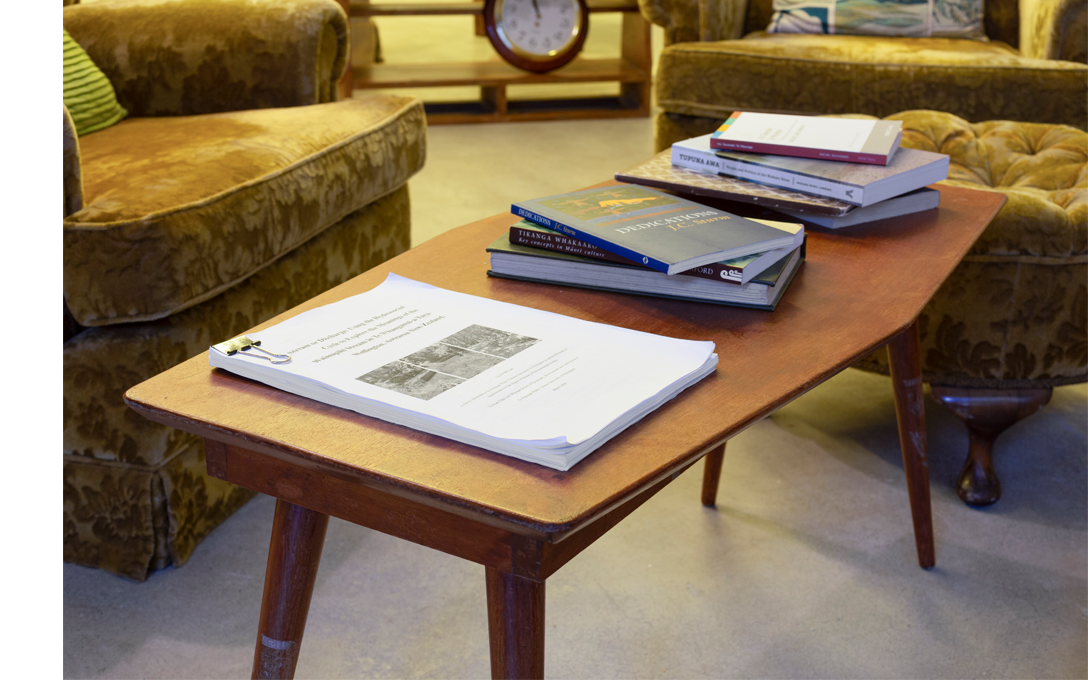
Cae Te Wheoro Heke and Nick Denton, A living room for Māpihi, 2022, mixed materials (detail). Image courtesy of Cheska Brown.
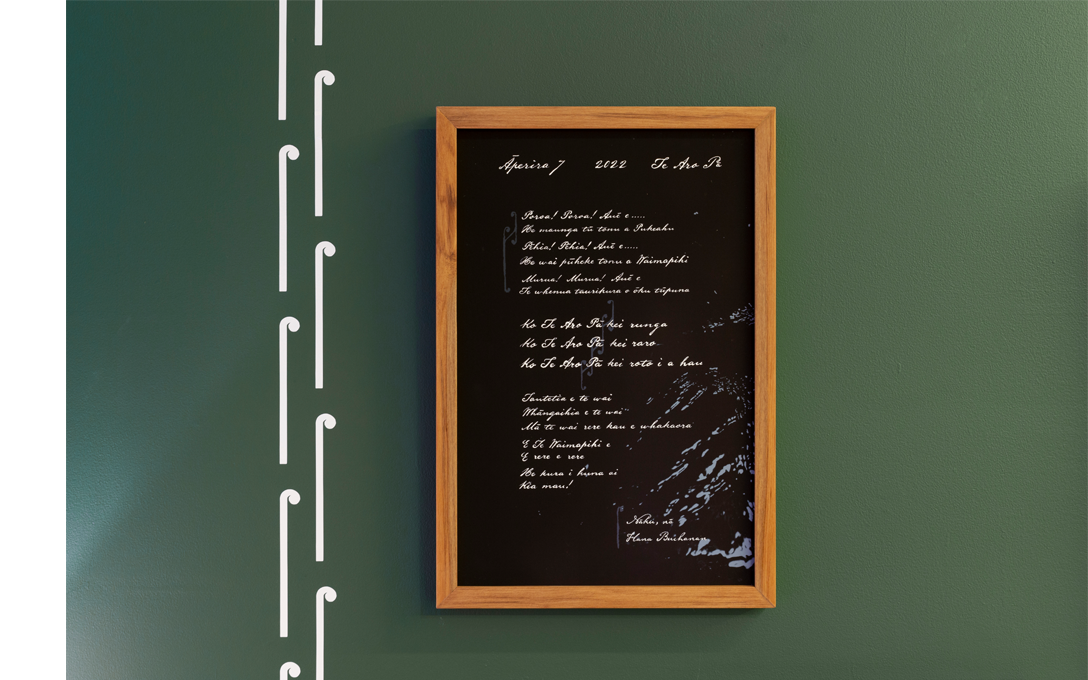
Cae Te Wheoro Heke and Nick Denton, Portraits of Waimapihi, 2022, digital prints (detail). Aro Ki Te Aro Pā, 2022, vinyl. Toi kupu Hana Buchanan, “Aperira 7 2022 Te Aro P̄ā”, 2022. Image courtesy of Cheska Brown.
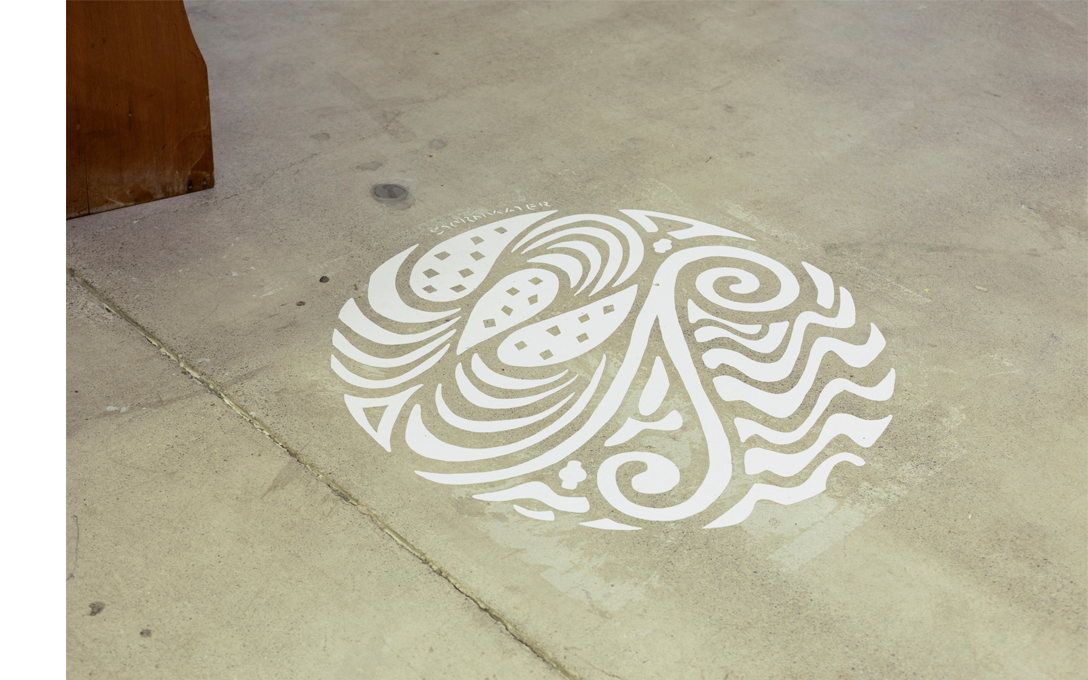
Cae Te Wheoro Heke and Nick Denton, A living room for Māpihi ,2002, mixed materials (detail). Strom water cover design, 2022, vinyl. Reproduction of original design by Tracy Kain, 2006. Image courtesy of Cheska Brown.

Cae Te Wheoro Heke and Nick Denton, Waimapihi Stormwater Pipe Cross-Sections, 2022, wall painting and vinyl (detail). Image courtesy of Cheska Brown.
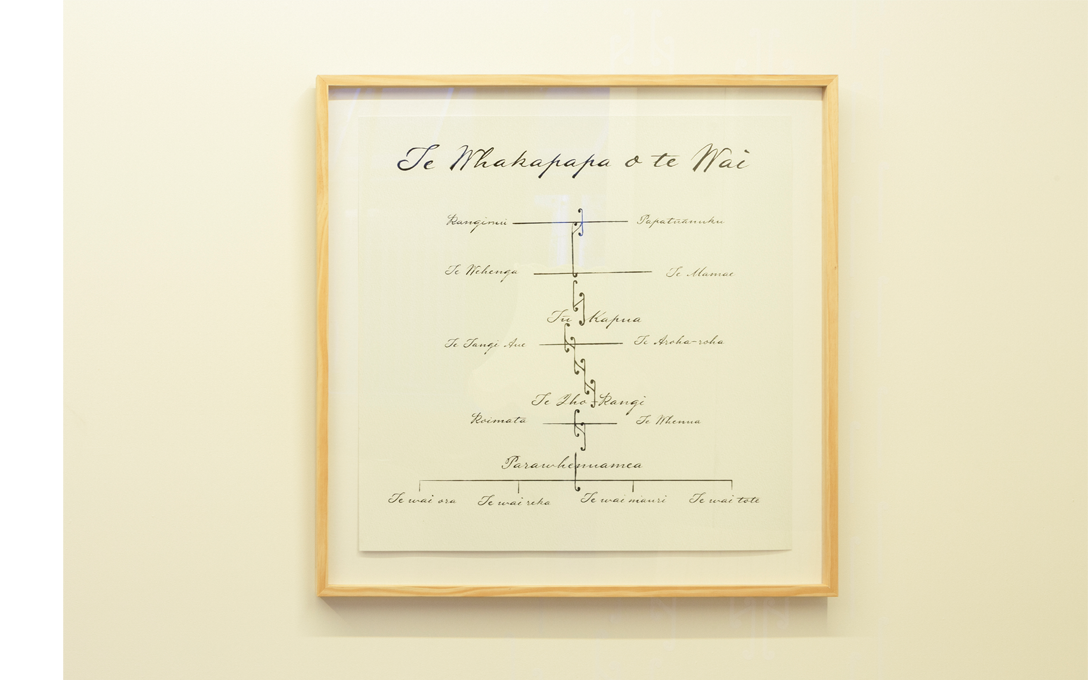
Cae Te Wheoro Heke and Nick Denton, Te Whakapapa o te Wai, 2022, digital print. Image courtesy of Cheska Brown.

Nick Denton and Cae Te Wheoro Heke, Te Arā Waimapihi, 2022. Two channel digital video. Sound composed and performed by Ruby Solly. Image courtesy of Cheska Brown.
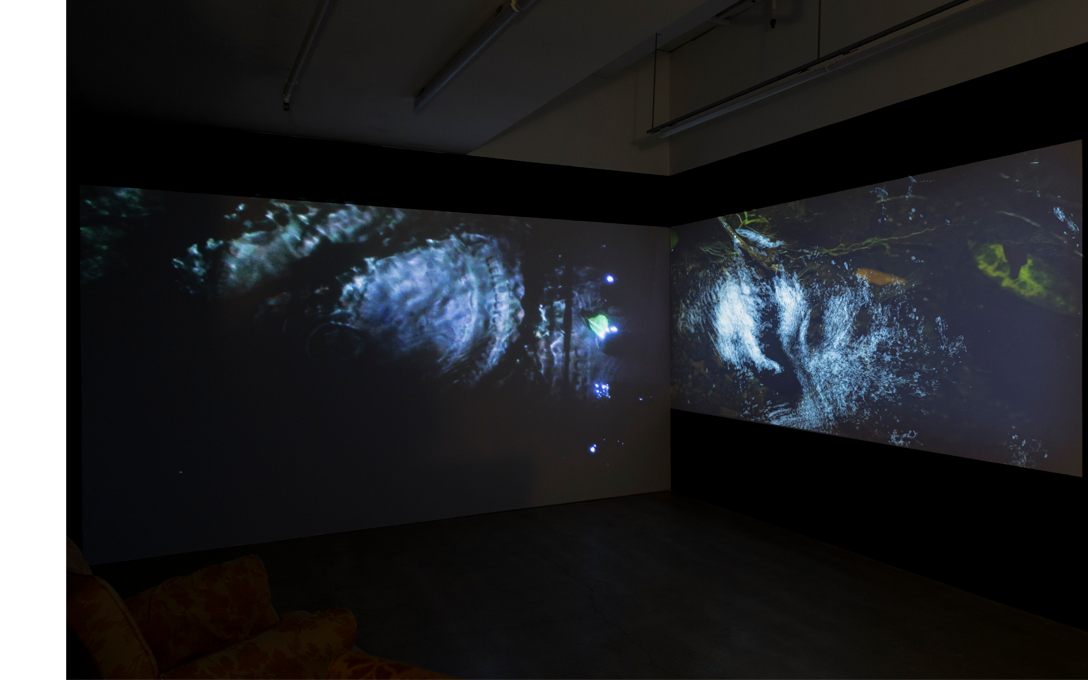
Nick Denton and Cae Te Wheoro Heke, Te Arā Waimapihi, 2022. Two channel projected video. Sound composed and performed by Ruby Solly. Image courtesy of Cheska Brown.
Watch Te Arā Waimapihi, the video component of Ko wai a Māpihi? This is not water on Vimeo.
Full screen recommended.
About the artists
Nick Denton is a tangata Tiriti architect and artist from Te Whanganui-a-Tara Wellington. His practice is motivated by questions of relationships, of our responsibilities and sense of place within our shared environments.
How do we create just and equitable places? How would we see the city if we knew the tuna as old as buildings that swim its rivers? How can a city centre indigenous sovereignty? Nick’s practice of photographic and digital image making, writing and spatial design seek to explore these questions, visualising relationships and spaces for community intervention and agency.
Nick graduated from Victoria University of Wellington with a Master of Architecture (Professional) in 2016, Bachelor of Architectural Studies (2014) and Bachelor of Science (2010). He is a registered architect and kaupapa whānau member of Ngā Aho.
Cae Te Wheoro Heke is a Ngā Puhi/Waikato artist and musician based in Te Whanganui-a-Tara.
Cae’s background is in toi Māori and industrial design, having graduated from Victoria University of Wellington with a Bachelor of Design Innovation (Hons) in 2017, Te Wananga o Aotearoa in 2020 and Te Wananga o Raukawa in 2021. She has a particular interest in mātauranga Māori and digital design; she applies this in her contributions to Te Ao Māori within design and artistic spaces.
She is currently practising as a freelance designer and illustrator, developing kaupapa Māori projects around Pōneke.
